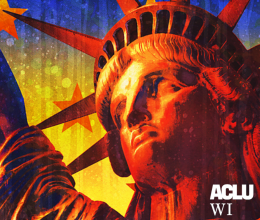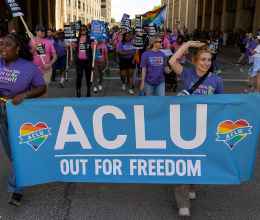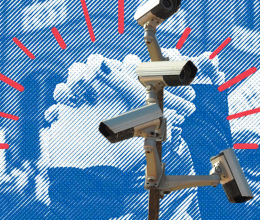As the Democratic National Convention concludes, the nation’s focus came to not only the City of Milwaukee, but also Wisconsin, a place where racial segregation, economic inequality and police brutality against people of color has long since been a problem.
After the video of George Floyd’s murder on May 25 went viral, the world changed. It was never a secret that Black and Brown people were disproportionately targeted by police, but this instance in particular was the catalyst to cause people to rise up and say “Enough is enough. This has to change.”
Floyd’s death is indicative of a problem facing our nation, including in Wisconsin. Wisconsin has seen countless Black and Brown people lose their lives in police-related interactions.
Here are just a few of the people of color killed in police interactions in recent years:
In April, 25-year-old Joel Acevedo died days after an off-duty Milwaukee police officer put him in a 10-minute chokehold during a fight. Mattioli was charged with first-degree reckless homicide.
In February, 17-year-old Alvin Cole was fatally shot while fleeing from police outside Mayfair Mall. Police say Cole shot first before officers returned fire. Wauwatosa Police released portions of dashcam footage, but were not equipped with body cameras. This was the third fatal shooting that the officer had been involved in. A charging decision has not yet been made.
On June 15, 2019, 18-year-old Ty’Rese West was fatally shot after a Mount Pleasant Police officer stopped West for not having a light on his bicycle and West fled. The officer claimed West had a gun. There was no body cam footage of the incident, and West’s fingerprints were never found on the gun. The Racine County DA said that the officer’s actions were justified.
In June 2017, 19-year-old Terry Williams was fatally shot by a Milwaukee County Sheriff's Deputy after reportedly attempting to flee from a traffic stop. The deputy fired eight time’s into Williams’ SUV. No charges were filed against the officer.
In May 2017, 22-year-old Adam Trammel died after West Milwaukee Police broke down the door to his apartment and Tasered him 18 times while he was showering. Trammel was pronounced dead when he arrived at the emergency room. The involved officers were not charged.
In August 2016, 23-year-old Sylville Smith was fatally shot by a Milwaukee Police Department officer seconds after body-camera video showed him throwing his weapon over a nearby fence. The shooting led to days of protests in Milwaukee’s Sherman Park area. The officer was charged, but was eventually acquitted.
In June 2016, 25-year-old Jay Anderson Jr. was fatally shot by a Wauwatosa Police officer inside his parked car after the officer said that he saw a gun in the vehicle and Anderson kept reaching for it. Anderson was shot five times in the head. The officer, who was not charged, was not wearing a body camera at the time of the shooting.
In April 2014, 31-year-old unarmed Dontre Hamilton was fatally shot by a Milwaukee Police officer while he was sleeping in Red Arrow Park. Hamilton was shot 14 times. The involved officer was fired, but charged. The decision sparked rage in the community, and led to the Milwaukee Police Department being equipped with body cameras.
It is obvious by these, and countless other examples, that changes need to be made to the infrastructure of policing. In some of these examples, mental health was a major factor.
A call has been made to ‘defund’ the police, but ‘defund’ is a largely misunderstood word.
Defunding doesn’t mean eliminating the police department. It means looking at the role police currently play in society, and reallocating resources to include counselors, social workers and other entities who are more suited to deal with the situations that police are involved in each day. Situations, that all too often, result in the death of people of color.
The defund debate comes as the Trump administration has begun deploying troops to cities across the country, including Milwaukee. We don’t need more police, especially ones kidnapping people and infringing on their rights, with zero accountability.
As we focus on the DNC, let’s remember these injustices. Let’s ask those in power to look at the systemic prejudices that exist in policing and envision a new way of policing going forward.





